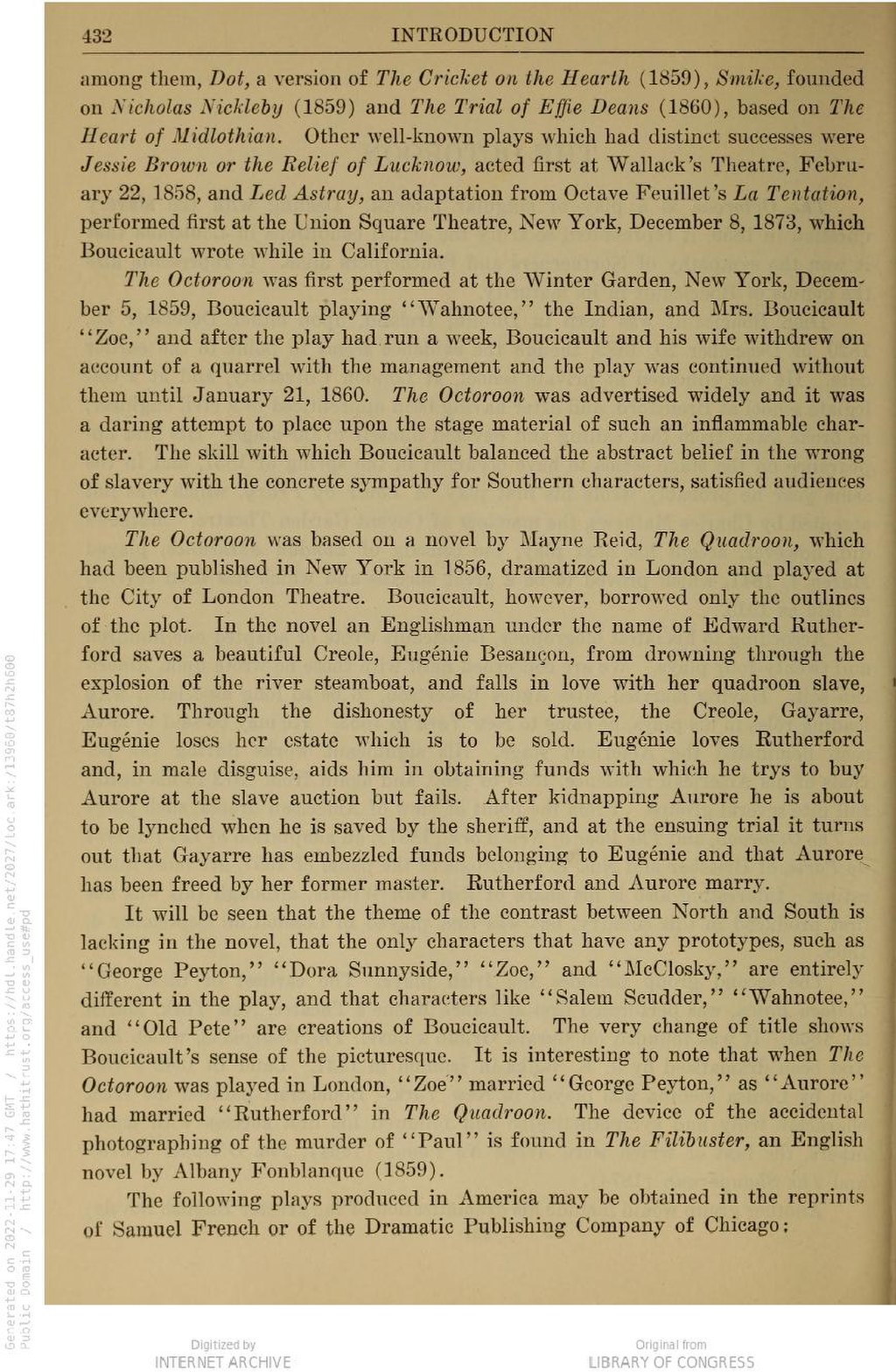among them, Dot, a version of The Cricket on the Hearth (1859), Smike, founded on Nicholas Nickleby (1859) and The Trial of Effie Deans (1860), based on The Heart of Midlothian. Other well-known plays which had distinct successes were Jessie Brown or the Relief of Lucknow, acted first at Wallack's Theatre, February 22, 1858, and Led Astray, an adaptation from Octave Feuillet's La Tentation, performed first at the Union Square Theatre, New York, December 8, 1873, which Boucicault wrote while in California.
The Octoroon was first performed at the Winter Garden, New York, December 5, 1859, Boucicault playing "Wahnotee," the Indian, and Mrs. Boucicault "Zoe," and after the play had run a week, Boucicault and his wife withdrew on account of a quarrel with the management and the play was continued without them until January 21, 1860. The Octoroon was advertised widely and it was a daring attempt to place upon the stage material of such an inflammable character. The skill with which Boucicault balanced the abstract belief in the wrong of slavery with the concrete sympathy for Southern characters, satisfied audiences everywhere.
The Octoroon was based on a novel by Mayne Reid, The Quadroon, which had been published in New York in 1856, dramatized in London and played at the City of London Theatre. Boucicault, however, borrowed only the outlines of the plot. In the novel an Englishman under the name of Edward Rutherford saves a beautiful Creole, Eugenie Besauçon, from drowning through the explosion of the river steamboat, and falls in love with her quadroon slave, Aurore. Through the dishonesty of her trustee, the Creole, Gayarre, Eugenie loses her estate which is to be sold. Eugenie loves Rutherford and, in male disguise, aids him in obtaining funds with which he trys to buy Aurore at the slave auction but fails. After kidnapping Aurore he is about to be lynched when he is saved by the sheriff, and at the ensuing trial it turns out that Gayarre has embezzled funds belonging to Eugenie and that Aurore has been freed by her former master. Rutherford and Aurore marry.
It will be seen that the theme of the contrast between North and South is lacking in the novel, that the only characters that have any prototypes, such as "George Peyton," "Dora Sunnyside," "Zoe," and "McClosky," are entirely different in the play, and that characters like "Salem Scudder," "Wahnotee," and "Old Pete" are creations of Boucicault. The very change of title shows Boucicault's sense of the picturesque. It is interesting to note that when The Octoroon was played in London, "Zoe" married "George Peyton," as "Aurore" had married "Rutherford" in The Quadroon. The device of the accidental photographing of the murder of "Paul" is found in The Filibuster, an English novel by Albany Fonblanque (1859).
The following plays produced in America may be obtained in the reprints of Samuel French or of the Dramatic Publishing Company of Chicago:
